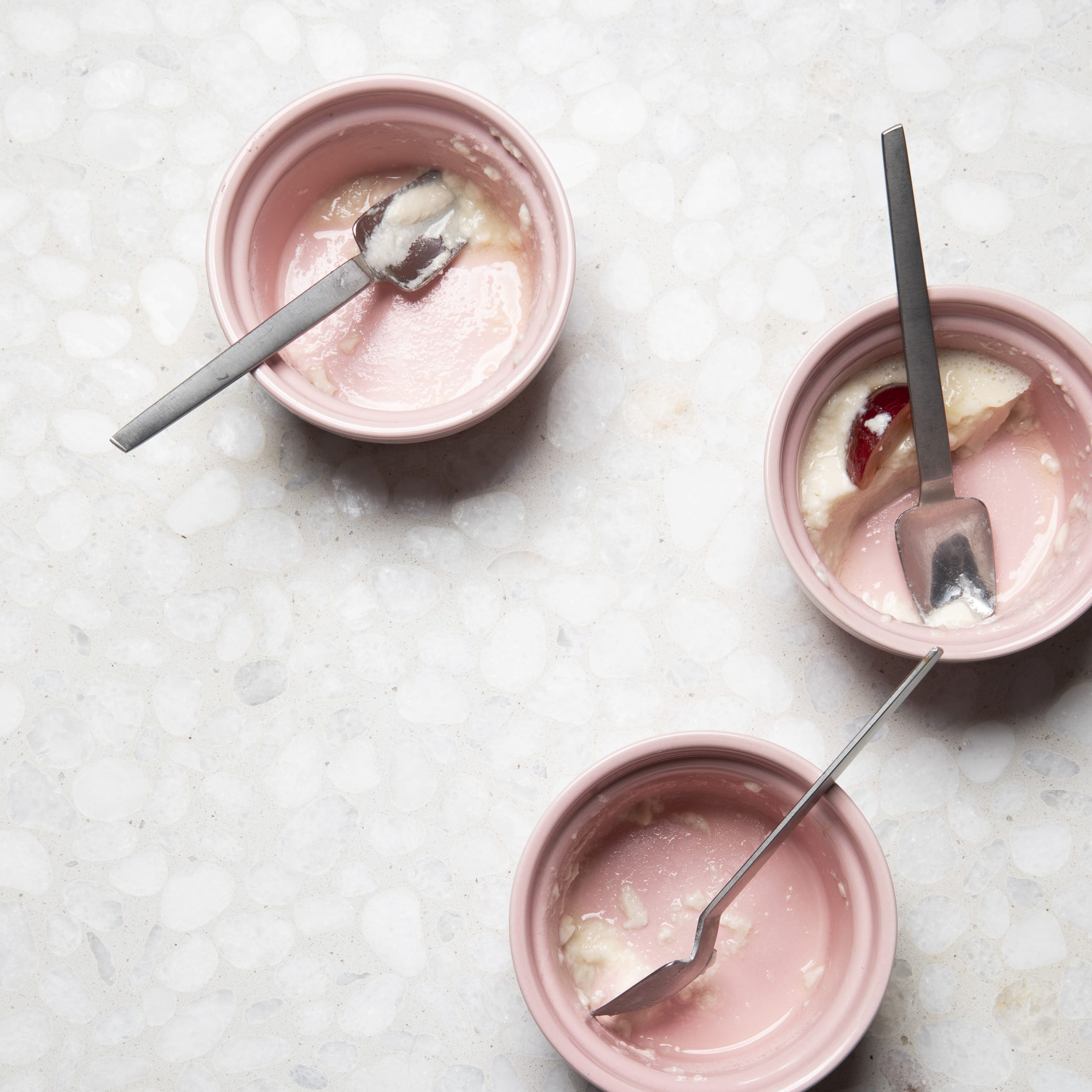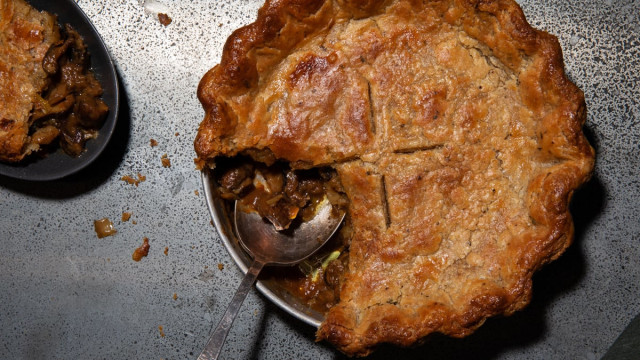Things Are Starting to Gel

When I was in art school in the ’90s I often visited my school friend Luke at Angelica’s Kitchen, the restaurant where he worked. Angelica’s was, until it shuttered a few years ago, a legendary vegetarian restaurant in New York City’s East Village neighborhood. Its menu never changed, but it was beloved. I usually left my visits with a treat. Luke often gave me slabs of cornbread or slices of tofu cheesecake, my two favorites from their menu, on my way out. Sometimes it was the kanten parfait that came home with me. I always eyed that parfait suspiciously but ate it anyway.
Until recently I hadn’t once thought about those parfaits filled with layers of goopy peach curd and granola that never seemed like dessert to me. But when I started developing a recipe for vegetarian panna cotta and came across the word kanten my mind immediately traveled back to 12th Street and the hippie menu that happily fed so many for decades. Then I used the memory of that kanten parfait as a guiding light for what I did not want as I tinkered with agar.
Agar-agar, or simply agar, as it is often referred to in pastry kitchens, is a gelatin-like substance extracted from red seaweed. It is made by washing and gently boiling seaweed until it releases a gooey substance that is washed, frozen, bleached, and eventually packaged as powder, flakes, or strands.
In Japan, where it is said to have been accidentally discovered in the 17th century, it is called kanten. (I love a food story where something great is discovered by accident!) Legend has it that one winter evening an innkeeper short of space in his kitchen stored a leftover batch of expensive, laborious seaweed soup that guests had not eaten outside in the snow. The next morning, he found that the soup had gelled overnight and thus vegan gelatin was born. Of course, it wasn’t called vegan gelatin then, but that is what agar is. It is the key ingredient in so many delicious and pretty jelly desserts popular in Asian countries.
Agar and gelatin have similar properties — they are both thickening, gelling agents, but how they work, how they behave, and what they are each made of could not be more different. To begin, gelatin is a fussier ingredient to work with. Yes, it has traditionally helped turn egg whites and sugar into marshmallows and fruit juice into its namesake dessert — gelatin. But gelatin is heat sensitive, which means it easily liquifies in warm weather and it also must be softened and hydrated before it can be incorporated into anything, otherwise it doesn’t dissolve well. Whereas agar easily incorporates in dishes and holds up in the heat. Also, and perhaps more importantly to some, gelatin is made from animal collagen while agar is not.

Panna cotta, a delicate dessert whose beauty lies in its simplicity, has traditionally relied on gelatin for structure. Although you can flavor a panna cotta with many different things, all you need to make one is cream, sugar, and gelatin. The best panna cotta strikes the perfect balance between gelatin and cream, making a liquid that holds its shape, barely.
When I set out to make a panna cotta with agar I had to remind myself not to think of what I was making as a facsimile of an existing recipe. I needed to find the place where the old dessert, a panna cotta made with gelatin, would meet the new one made with agar.
My first round was rubbery. Subsequent ones less so, but the ones that held their shape were all firm, not jiggly, and had the mouthfeel of applesauce like the kanten parfait I had sworn to avoid. Eventually, I had to come to terms with the fact that an agar panna cotta was never going to be as jiggly as a gelatin one, but what I could not get over was that applesauce feel that to me screamed “not panna cotta.”
After many attempts, and using just enough agar, I made one that could be respectfully called a panna cotta. It had a silky texture and a little shake you could almost call a jiggle, but the desired texture was not without compromise. Not firm enough to be a free-standing dessert, it had to be poured and served in a cup. With pickled grapes and a drizzle of honey, nobody will mind.
RECIPE: Salted Honey & Almond Panna Cotta
Key Takeaways
- Agar is a healthy plant option for gelatin.
- Agar is rich in fiber and minerals.
- It boosts gut health and digestion.



